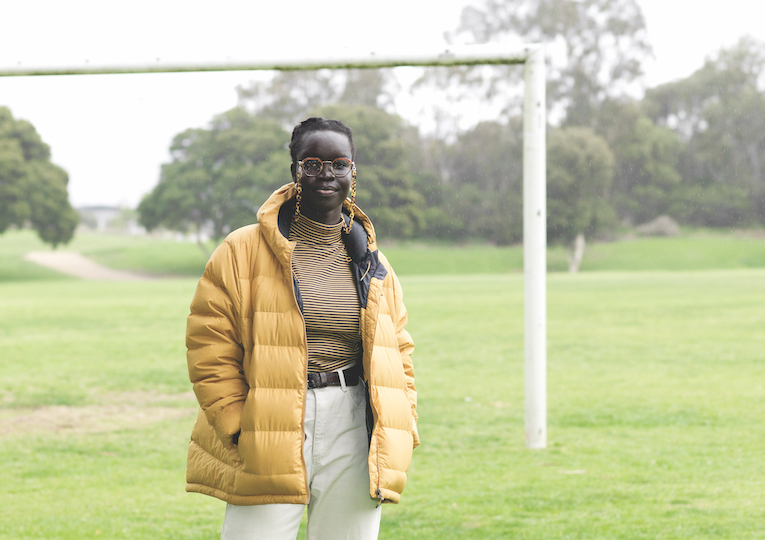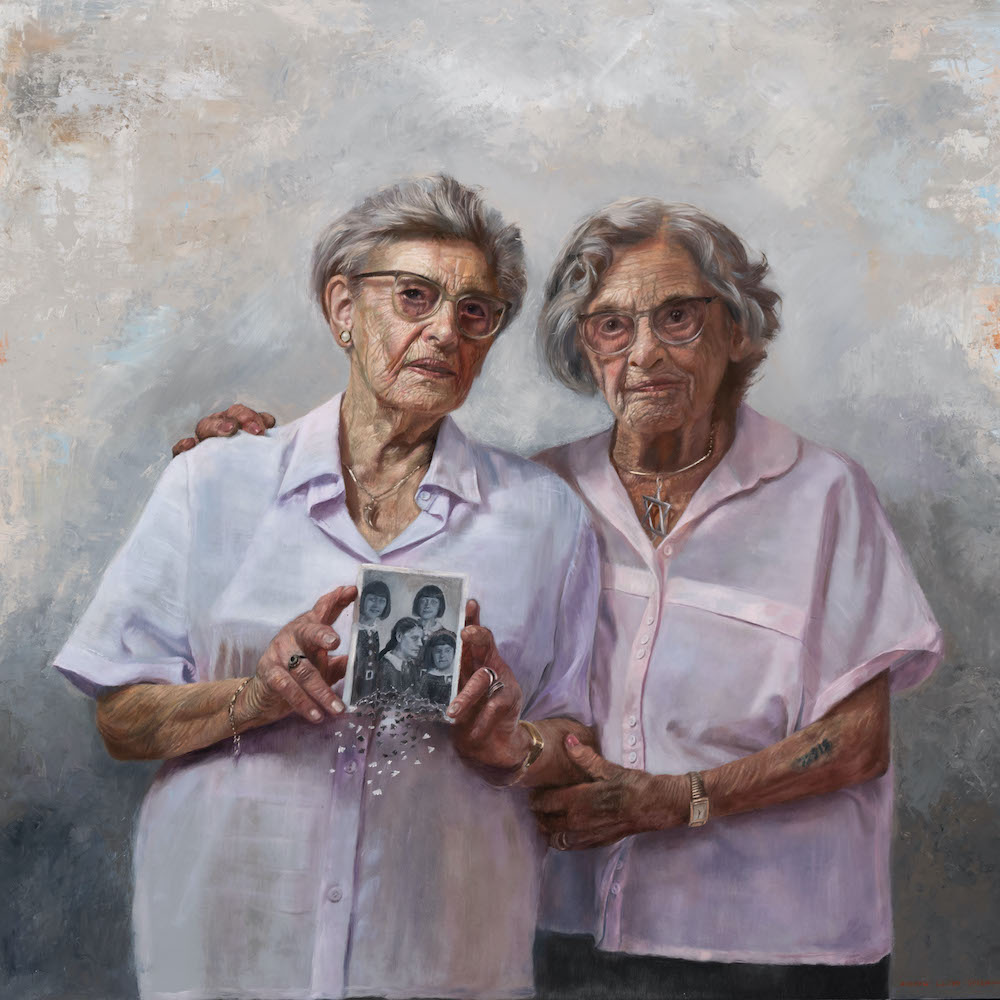Atong Atem: Look again
Complex and drenched in personal and collective history, the work of Atong Atem asks us to refocus our gaze.
Words: Diego Ramirez
Photography: Elke Meitzel
Best known for her acclaimed photographs exploring African identity, Atong Atem is expanding her practice to incorporate video. The Ethiopian-born, South Sudanese artist’s new highly stylised film Banksia, 2021, considers the limits of Australian identity by referencing and commenting on the overlooked history of early African settlers who arrived in the First Fleet to Australia in 1788.
This is an important development in the artist’s practice, and has seen her incorporate new mediums to advance her interest in bodies and identity. However, this exciting foray into the moving image keeps most of the preoccupations that typify her luscious pictures alive, such as her palpable concerns with migration. The non-linear video shares many similarities with her past work and references the aesthetics of stage photography that define her practice, while also exploring the new possibilities that a moving camera affords her, including the capacity to weave abstract narratives. The resulting work is like a dream unfolding on screen.
Atong situates us in the complex history of photography and the politics of representation, where the Western gaze has used the invention of the camera to create the Other.The video moves on to show a photographic tableau staged within a colonial building and ends with a group of women, who are clapping, putting on jewellery, and singing in an expression of culture. This scene continues to show water – this time pouring from a jar – to invoke the idea of the shore and the arrival of African people in the First Fleet.
This exemplifies the core of the work, which is to consider sidelined histories of migration in so-called Australia. The artist has a personal connection to this theme, having herself moved to this country as a refugee in the 1990s. Thus, she is preternaturally able to question the white myth of Australia and acknowledge the African settlers that precede her. The sea of the past meets the river of the present in Banksia, where the tides of the future wash away the misconceptions of this nation.
ELIAS REDSTONE – ARTISTIC DIRECTOR PHOTO 2021:
I first saw Atong Atem’s work at the Centre for Contemporary Photography in 2017 shortly after I moved to Melbourne. Her exhibition The Process of Feeling referenced the visual languages of African studio photography yet created work that was distinctly about Australia. It speaks to rich cultural expression that often exists outside mainstream culture in this country, yet comes to the fore in her work.
It’s compelling to watch her develop as an artist and continue to defy anyone’s expectations of her.
Her commission at the Immigration Museum for PHOTO 2021 drew from the visual languages of fantasy and science fiction, Afrofuturism, history and mythology, studio portraiture and youth culture to create a unique body of work that is distinctly Atong Atem.
Working predominantly with diaspora communities in Australia, Atong’s subjects are empowered to control their own narratives. The resulting work does not just provide visibility for these collaborators, it outright celebrates them.
While her practice is grounded in Australia, it has universal appeal and she is changing perceptions of what people can expect from Australian art.
ANDY DINAN – FOUNDER AND DIRECTOR, MARS GALLERY:
I have represented Atong for just over three years now, and in all that time there would not be a day where I am not talking about her or her work. I think it is a mark of how incredible she is.
Her work is one that considers the world and our place in it, presenting a nuanced view of the variety of concerns that we encounter. She encapsulates a zeitgeist and demonstrates a deep understanding of the issues that preoccupy us as a society. I love that Atong is constantly challenging the boundaries of portraiture, deconstructing and reconstructing her approach to create a distinctly non-colonial style that pivots from this Eurocentric concept of what portraiture should be. In my job and my life, I look at a hell of a lot of art every single day. When it comes to Atong’s work, I always want to look again – and to me, that is great art.
We purposely set Atong’s prices to be achievable for everybody; we want young collectors to own her works and join us on her journey. We don’t set high editions, and offer two sizes in prints. After her last show there was quite a lot of pressure to increase the prices of her works but we really didn’t want to do that – it was something that goes against everything both Atong and I stand for with art.
This article was originally published in Art Collector issue 97, July-September 2021.











